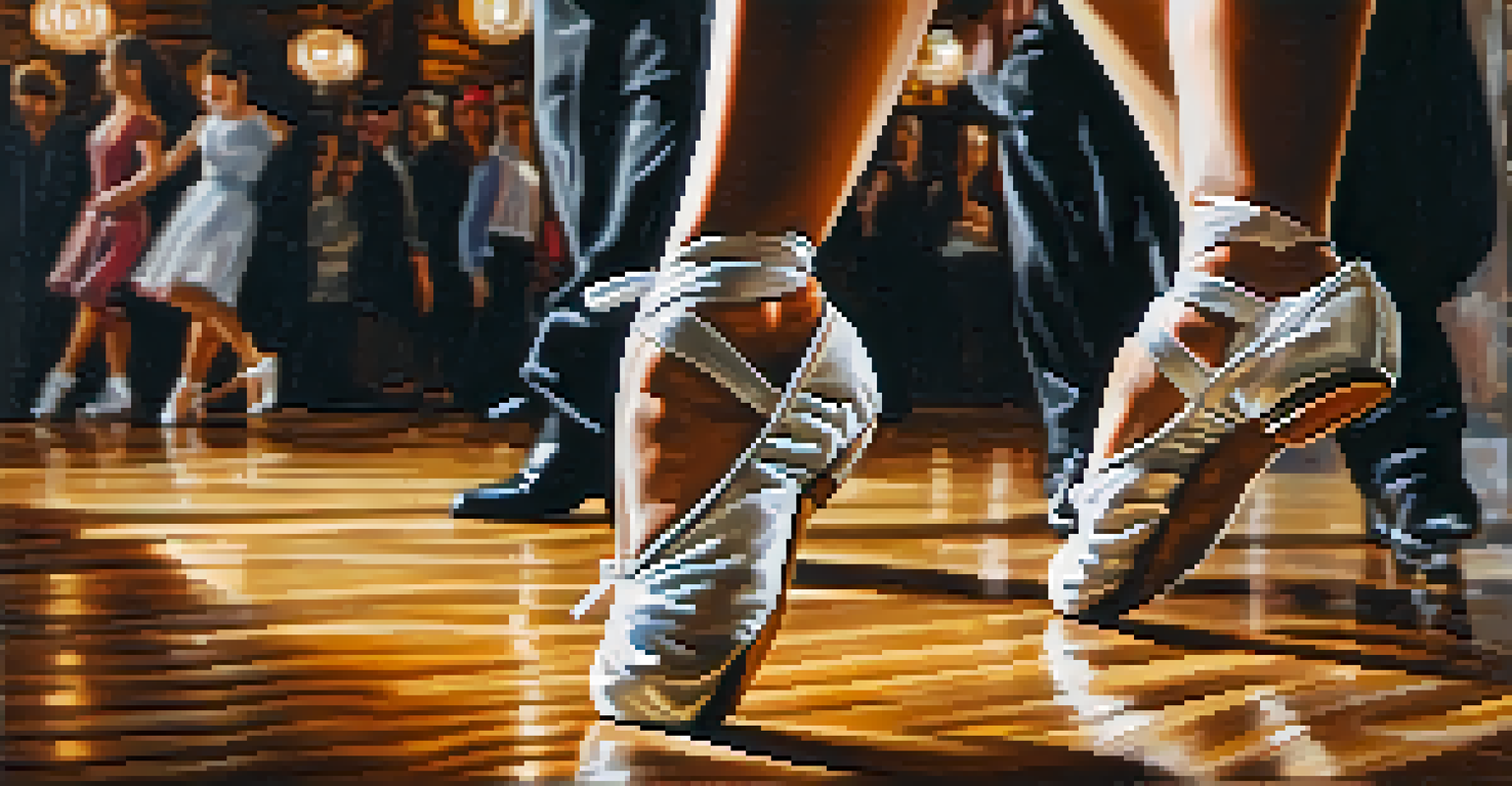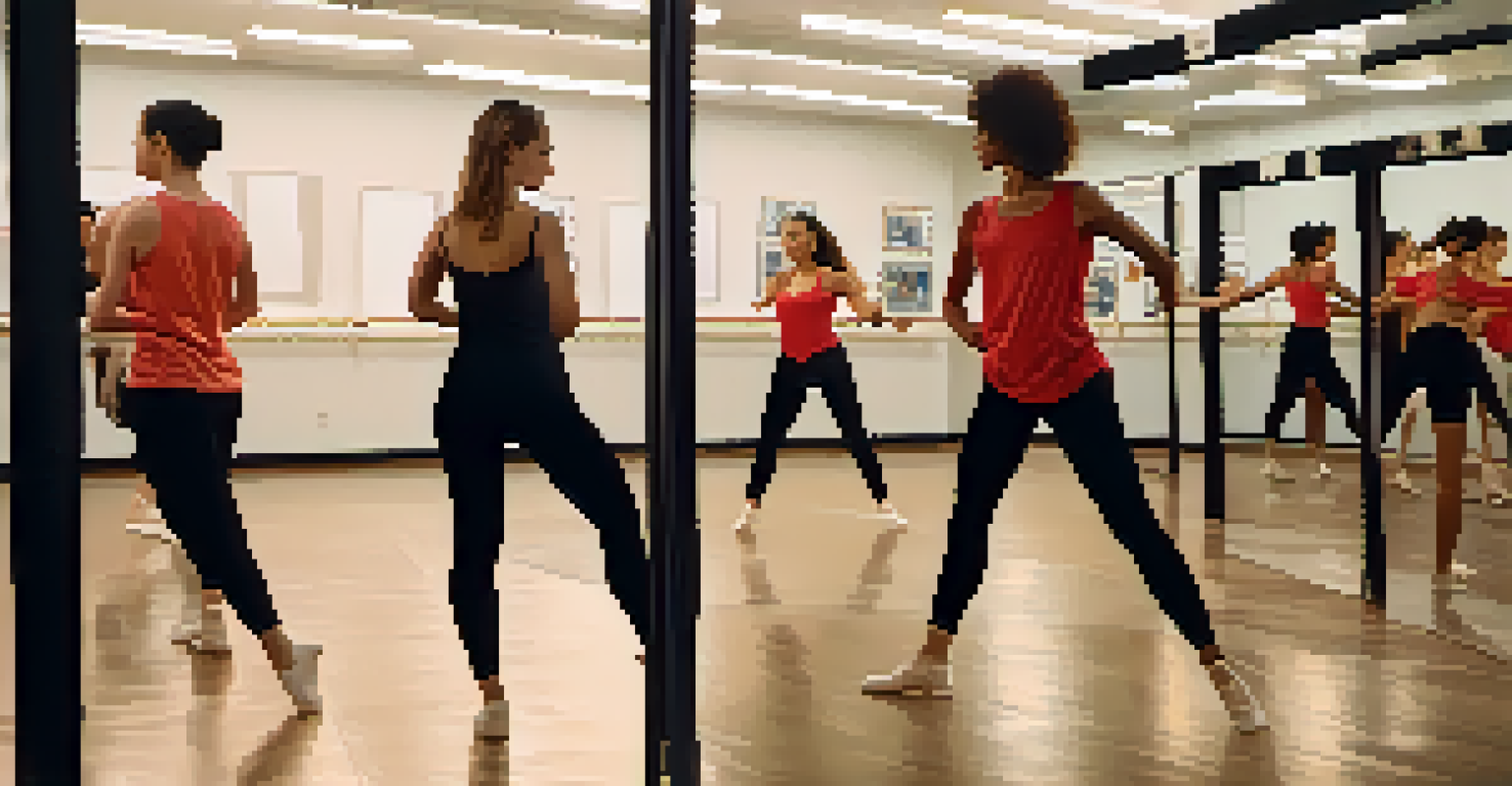The Role of Gamification in Engaging Dance Communities

Understanding Gamification in the Dance Context
Gamification refers to the application of game-design elements in non-game contexts. In the dance world, this could mean incorporating point systems, challenges, or rewards to motivate participants. Think of it as adding a little competitive spice to your dance classes or community events.
Gamification is not just a trend; it's a powerful tool to enhance engagement and motivation across various fields, including the arts.
By integrating gamification, dance studios and groups can create a more interactive and enjoyable experience. For example, a dance studio might introduce a leaderboard where dancers can track their progress and compete against friends. This not only boosts motivation but also fosters a sense of community among participants.
Ultimately, gamification transforms the way dancers interact with their craft. It encourages continuous participation, improves skill levels, and enhances the overall enjoyment of dancing, making it a win-win for everyone involved.
Building a Sense of Community Through Competition
One of the most appealing aspects of gamification is its ability to unite individuals through friendly competition. When dancers compete in challenges, whether online or in-person, it promotes camaraderie and collective effort. It’s like gathering your friends for a dance-off; everyone brings their A-game while having fun together.

This competitive spirit can lead to deeper connections among participants. When dancers support each other in achieving goals or overcoming challenges, it strengthens their bonds. Imagine a scenario where a group of dancers collaborates to complete a series of choreography challenges—it's not just about dancing; it’s about building friendships.
Gamification Boosts Dance Engagement
Incorporating game elements in dance fosters motivation, participation, and community spirit among dancers.
In essence, gamification creates an environment where community thrives. The shared experiences, triumphs, and even setbacks create lasting memories that resonate beyond the dance floor.
Enhancing Skill Development with Game Mechanics
Gamification not only makes dance more enjoyable; it also plays a critical role in skill enhancement. By introducing levels or badges for mastering specific techniques, dancers can visualize their progress and set achievable goals. It’s akin to leveling up in a video game; each achievement brings a sense of accomplishment.
The essence of a game is that it is a world of challenges and rewards, and this can be applied to any area, including dance, to create a vibrant community.
This structured approach to skill development encourages dancers to push their limits. For instance, a dance studio might offer badges for mastering different styles, motivating participants to diversify their skills. As dancers strive to earn new badges, they inevitably become more versatile and well-rounded performers.
Moreover, gamification fosters an environment of healthy competition, which can be a powerful motivator. When dancers see their peers mastering techniques, they are often inspired to improve themselves, creating a cycle of continuous learning and growth.
Boosting Motivation Through Rewards and Recognition
One of the cornerstones of gamification is the reward system, which can be incredibly motivating for dancers. Whether it’s earning points, receiving tangible rewards, or gaining recognition, these incentives can spark enthusiasm to participate regularly. The idea is simple: who doesn’t love a good reward?
For example, a dance organization might offer prizes for the most improved dancer or for those who participate in the most classes. This creates an environment where consistent effort is acknowledged and celebrated, reinforcing positive behavior. It’s much like receiving a gold star in school; it feels good and encourages you to keep going.
Community Grows Through Friendly Competition
Gamification encourages camaraderie as dancers connect and support each other through shared challenges.
In essence, rewards and recognition can transform the dance experience. They not only motivate individuals to improve their skills but also enhance their commitment to the community.
Utilizing Technology to Implement Gamification
With the rise of technology, implementing gamification in dance communities has never been easier. Mobile apps, online platforms, and social media can all serve as tools to engage dancers in fun, interactive ways. Think of apps that track progress, offer challenges, or even host virtual dance battles.
For instance, certain platforms allow dancers to share their performances and receive feedback from peers, creating a sense of accountability and community engagement. This tech-savvy approach not only makes dance more accessible but also opens up a world of possibilities for connection and creative expression.
As technology continues to evolve, so does the potential for gamification in dance. The integration of technology can enhance the overall experience, making it more dynamic and engaging for both dancers and instructors.
Overcoming Challenges to Gamification Adoption
While gamification offers numerous benefits, there can be challenges in its adoption within dance communities. Some may resist the idea, fearing it could detract from the art of dance. However, it’s essential to emphasize that gamification is an enhancement, not a replacement.
To overcome these barriers, it’s crucial to communicate the value of gamification clearly. Demonstrating how it can lead to increased participation, improved skills, and stronger community ties can help alleviate concerns. For instance, hosting a workshop showcasing gamified exercises can provide firsthand experience of its benefits.
Technology Enhances Dance Experiences
Utilizing apps and online platforms makes gamification accessible, enriching the dance journey for everyone.
By gradually introducing gamification in a way that aligns with the community’s values, it can become a natural part of the dance experience. Emphasizing its role in fostering creativity and connection can help dancers embrace this innovative approach.
The Future of Gamification in Dance Communities
As we look ahead, the future of gamification in dance communities appears bright. With ongoing advancements in technology and an increasing focus on community engagement, more dancers are likely to embrace this interactive approach. Imagine a world where every dance class includes gamified elements that keep students excited and engaged.
Moreover, as dance communities continue to grow globally, gamification can help bridge cultural gaps. By creating universal challenges and games, dancers from different backgrounds can connect and share their love for dance, fostering a sense of global unity.

In conclusion, the integration of gamification into dance communities not only enhances engagement but also enriches the overall experience. As we embrace this innovative approach, the potential for growth, connection, and creativity in the dance world is limitless.